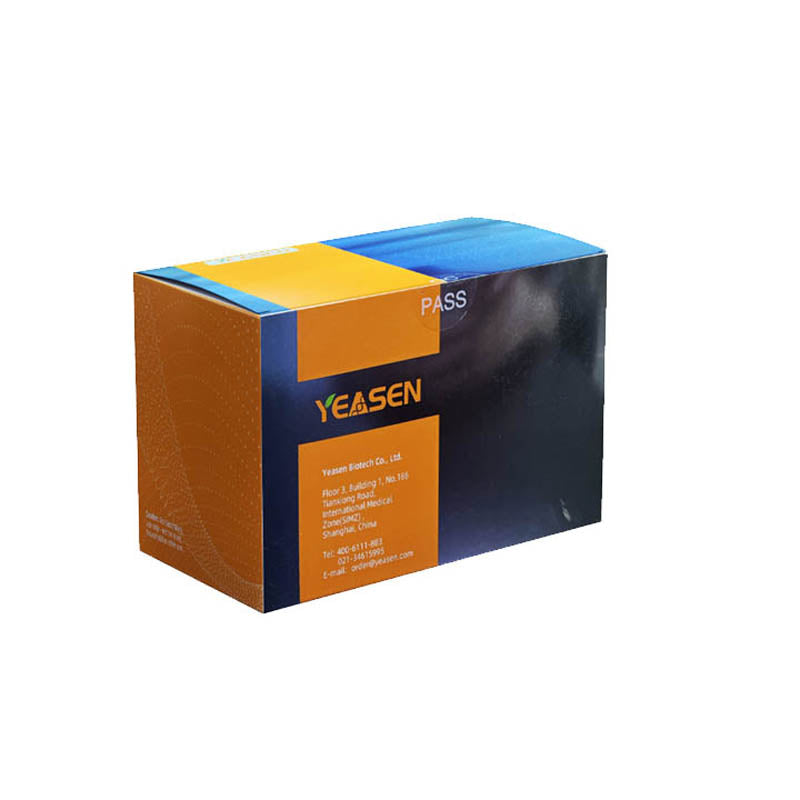Description
Kex2 protease, also known as a double-alkaline endopeptidase or YSCF protease, is a calcium-dependent serine protease that is responsible for processing the precursors of killer toxin and α-factor within yeast cells. It specifically recognizes and cleaves the peptide bonds at the carboxyl end of dibasic amino acids such as Arg-Arg and Lys-Arg. Unlike trypsin, Kex2 does not recognize and cleave the peptide bonds at the carboxyl end of single basic amino acids, such as arginine or lysine. The activity of Kex2 protease is not inhibited by conventional serine protease inhibitors such as aprotinin, PMSF, or TPCK.
Yeasen Recombinant Kex2 Protease is expressed in Pichia pastoris, produced under GMP regulations, free of any animal-derived components, and without the risk of viral contamination from animal sources. It has the same enzymatic specificity as the natural Saccharomyces cerevisiae Kex2 enzyme. The optimal pH for activity is pH 9.0, and the stable storage pH is between 5.0 and 6.0.
Features
1.Strong specificity—Specifically recognizes and cleaves the peptide bonds at the carboxyl end of dibasic amino acids such as Arg-Arg and Lys-Arg.
2.High purity—Purity≥95%.
3.Animal free—Recombinantly produced, free from exogenous viral contamination, and no animal-derived materials are used in the production process.
Applications
1.Processive enzymatic cleavage in peptide drug production.
2.Enzymatic digestion of proteins and peptide mapping, sequencing, etc.
Specifications
|
Source |
Yeast recombinant expression |
|
Molecular Weight |
Theoretical value 67.0±6.7 kDa |
|
Appearance |
White or off-white powder |
|
Enzyme Concentration |
≥10.0 units/mg pro |
|
Unit Definition |
At 25℃, in a 3 mL reaction system containing 50 mM Tris-HCl and 2 mM CaCl2 at pH 8.0, the amount of enzyme that catalyzes the release of 1 μmoL of 4-nitroaniline from the substrate Boc-QRR-pNA per minute is defined as one unit of enzyme activity. |
|
Quality Assurance |
SDS-PAGE gel detection shows a clear single band of the target protein; no other proteases present, no non-specific cutting. |
Storage
Lyophilized powder can be stored at 2~8℃ for one year, protected from light and moisture.
Dissolution and Storage Buffer (20 mM NaAc-HAc, pH 5.2, 2 mM Ca2+), after dissolution, store at below -20℃, it is recommended to aliquot for storage to avoid repeated freezing and thawing.
Payment & Security
Your payment information is processed securely. We do not store credit card details nor have access to your credit card information.
Inquiry
You may also like
FAQ
The product is for research purposes only and is not intended for therapeutic or diagnostic use in humans or animals. Products and content are protected by patents, trademarks, and copyrights owned by Yeasen Biotechnology. Trademark symbols indicate the country of origin, not necessarily registration in all regions.
Certain applications may require additional third-party intellectual property rights.
Yeasen is dedicated to ethical science, believing our research should address critical questions while ensuring safety and ethical standards.

